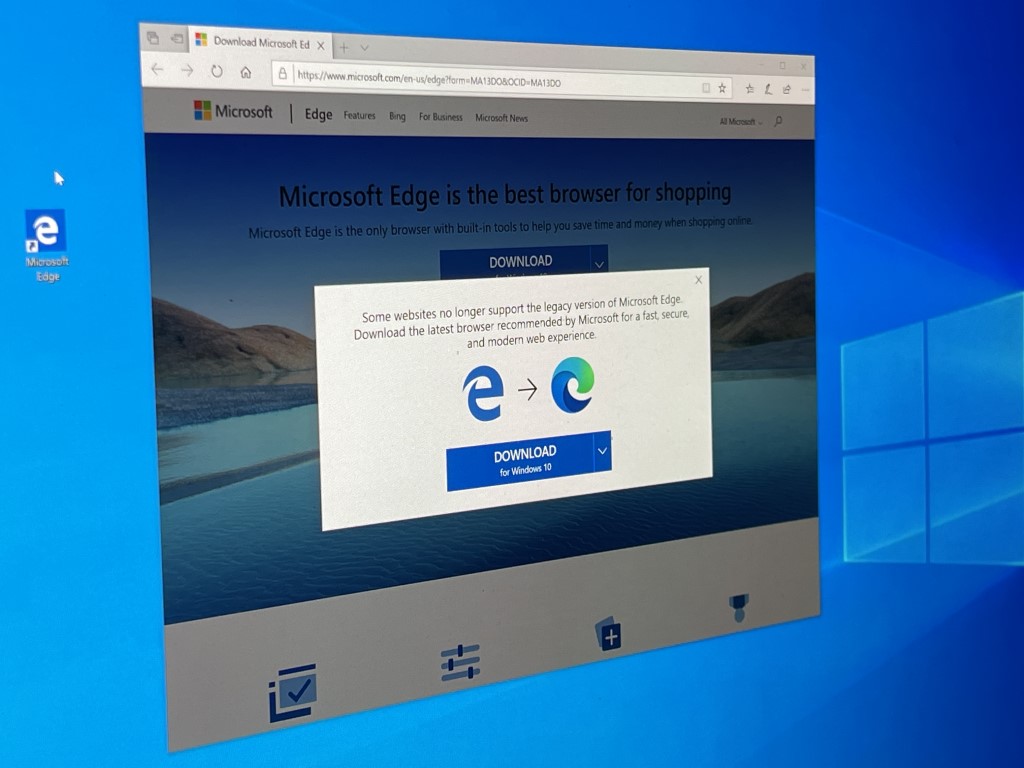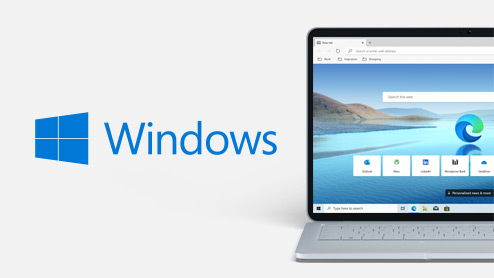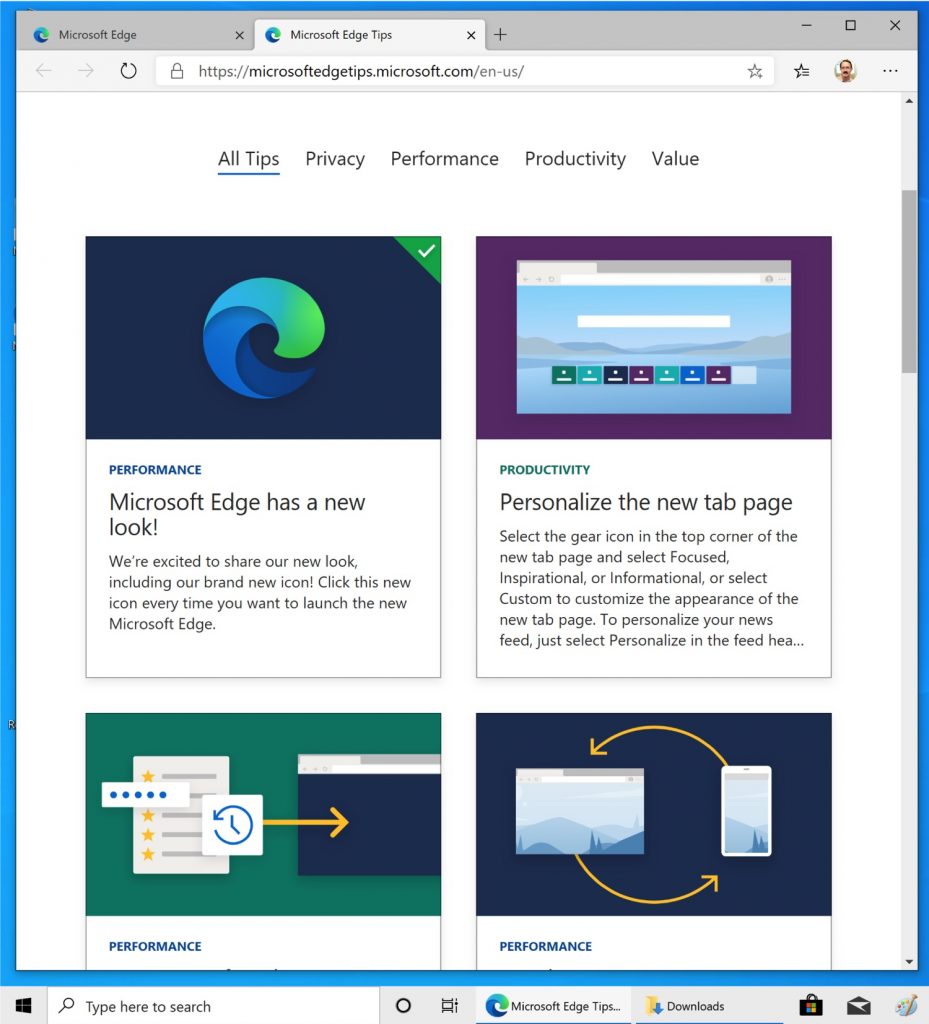Edge Windows 10
Microsoft Edge is an internet browser made by Microsoft, which is installed by default on all new Windows computers. Edge was made to replace Internet Explorer, and runs faster and with more. Microsoft edge for non-windows devices IF YOU LIVE IN (OR ARE A BUSINESS WITH A PRINCIPAL PLACE OF BUSINESS IN) THE UNITED STATES, PLEASE READ THE “BINDING ARBITRATION AND CLASS ACTION WAIVER” SECTION 2.14 BELOW. With your permission, the new Microsoft Edge can remember information for you, making it easier to return to a favorite site or fill in forms. Microsoft Edge stores your browsing data, such as your passwords, info you've entered in forms, sites you've visited, and other information. Microsoft Corporation Personalize Microsoft Edge with a new browser theme inspired by the Master Chief’s adventures on the mysterious alien ringworld known as Halo. This theme changes the look.

Note: This article is for the new Microsoft Edge . Get help for the legacy version of Microsoft Edge.
With your permission, the new Microsoft Edge can remember information for you, making it easier to return to a favorite site or fill in forms. Microsoft Edge stores your browsing data, such as your passwords, info you've entered in forms, sites you've visited, and other information. Other browsing modes such as InPrivate browsing and Guest mode function differently and store less data than normal browsing.
Your browsing data is stored on your device. If you've turned on sync, those data types can also be stored in the Microsoft cloud to be synced across your signed in versions of Microsoft Edge.
You can see and clear your browsing history by selecting Settings and more > History > Manage history. You may choose to clear your browsing history at any time.
Clear browsing data stored on your computer
To clear browsing data on your computer, make sure sync is turned off. Items that are synced will be cleared across all synced devices.
Here's how to clear your browsing data in Microsoft Edge:
Select Settings and more > Settings > Privacy, search, and services .
Under Clear browsing data, select Choose what to clear.
Choose a time range from the Time range drop-down menu.
Choose the types of data you want to clear (see the table below for descriptions). For example, you may want to remove browsing history and cookies but keep passwords and form fill data.
Select Clear now.

Clear browsing data stored in the cloud (if you’ve turned on sync or personalization)
To manage and delete data saved in the Microsoft cloud, see the privacy dashboard. On the privacy dashboard you can view or delete your data. Data that you delete on the privacy dashboard won’t be deleted from your device.
To learn more about how to stop sharing your data with Microsoft, see Microsoft Edge browsing data and privacy.
Browsing data you can delete in the browser
Types of info | What gets deleted | Where it's stored |
|---|---|---|
Browsing history | The URLs of sites you've visited, and the dates and times of each visit. | On your device (or if sync is turned on, across your synced devices) |
Download history | The list of files you've downloaded from the web. This only deletes the list, not the actual files that you've downloaded. | On your device |
Cookies and other site data | Info that sites store on your device to remember your preferences, such as sign-in info or your location and media licenses. | On your device |
Cached images and files | Copies of pages, images, and other media content stored on your device. The browser uses these copies to load content faster the next time you visit those sites. | On your device |
Passwords | Site passwords that you've saved. | On your device (or if sync is turned on, across your synced devices) |
Autofill form data (includes forms and cards) | Info that you've entered into forms, such as your email, credit card, or a shipping address. | On your device (or if sync is turned on, across your synced devices) |
Site permissions | Go to Settings and more > Settings > Site permissions to see a list for each website, including location, cookies, pop-ups, and media autoplay. | On your device |
Hosted app data | Info web apps store on your device. This includes data from the Microsoft Store. To see the apps saved to Microsoft Edge, go to Settings and more > Apps > Manage apps. | On your device |
Clear Internet Explorer browsing data using Microsoft Edge
Using Microsoft Edge, you can clear all browsing data from Internet Explorer. Clearing Internet Explorer browsing data won’t affect your browsing data in another browser.
Note: This is only available if your organization has turned on Internet Explorer mode.
In Microsoft Edge, select Settings and more > Settings > Privacy, search, and services .
Under Clear browsing data for Internet Explorer, select Choose what to clear.
Choose the types of data you want to clear.
Select Delete.
Related topics
-->Progressive Web Apps (PWAs) provide access to open web technologies for cross-platform interoperability and provide your users with a native, app-like experience customized for their devices. PWAs are websites that are progressively enhanced to function like native apps on supporting platforms. The qualities of a PWA combine the best of the web and native apps.
Discoverable
From web search results and supporting app stores
Installable
Pin and launch from the home screen, Start Menu, Taskbar, and so on
Re-engageable
Send push notifications, even when the app is not active
Network Independent
Works offline and in low-network conditions
Progressive
Experience scales up (or down) with device capabilities
Safe
Provides a secure HTTPS endpoint and other user safeguards
Responsive

Repair Edge Windows 10
Adapts to the user's screen size or orientation and input method
Linkable
Share and launch from a standard hyperlink
Build (or convert) your existing website to a PWA to enhance your engagement with your users. Enhancements include push notifications, app-like integration, and offline support. Continue to build your audience on the open web for users to discover your PWA through search and link-sharing. Best of all, your app is updated in using your web server code.

PWAs on Microsoft Edge (Chromium)
Edge Windows 10 Not Working
When you build a Progressive Web App targeting web standard APIs, your app may be deployed across platforms and devices and take advantage of the device-specific capabilities as available. PWAs in Microsoft Edge (Chromium) add the following advantages to your website.
- Your app is built on a standards-based web platform.
- Enables your users to install your app directly from the browser.
- Enables your users to install your app without a Store-based deployment or registration.
Desktop PWAs are supported on any of the platforms Microsoft Edge (Chromium) is available. Microsoft Edge (Chromium) is available on Windows 7, Windows 10, and macOS. The following benefits are included.
Apps may be installed directly from within the browser using the Install icon in the navigation bar.
Apps may also be installed, run, and managed from the Settings > Apps menu
Web Notifications are integrated into the Windows notification system
Shared cookie store with the browser profile that installed the app
Access to other browser features using the Setting and more (
...) menu including certificate validation, site permissions, tracking protection, and browser extensionsFull access to Microsoft Edge DevTools for debugging your app

Note
For more information about PWA benefits, upcoming features, and short demos, navigate to Build 2020 PWA session.
Requirements
To run as a PWA, your server-hosted web app should include following minimum requirements.
Protects your users by providing a secure connection for server or app communication. Service Workers and other PWA technologies only work with web resources served over a secure connection (or from localhost for debugging purposes).
Uses Service Worker threads to act as network proxies between your server and client app. Service Worker threads provide offline support, resource caching, push notifications, background data sync, and page-load performance optimizations.
Provides a JSON-based metadata file that describes key information about your web app, so that Windows 10 and other host platforms provide your PWA users with an installable, native app-like experience. Key information includes icons, language, and URL entry point.
To be a great PWA, your app must also meet the following requirements.
Ensure your PWA works by testing in different browsers and environments.
Employs fluid layouts and flexible images. Responsive design includes the following elements that adapt your UX to your user's device.
- CSS grid
- CSS grid and flexbox
Uses device emulation tools from your browser to locally test, or create a remote debugging session on Windows or Android to test directly on a target device.
Routes each page of your site to a unique URL so existing users may help you engage an even broader audience through social media sharing.
Uses code quality tools like the Webhint linter to optimize the efficiency, robustness, safety, and accessibility of your app.
Verifies your PWA against the Google baseline PWA checklist.
Note
To turn your PWA into a Microsoft Store app, navigate to Progressive Web Apps in the Microsoft Store.
See also
